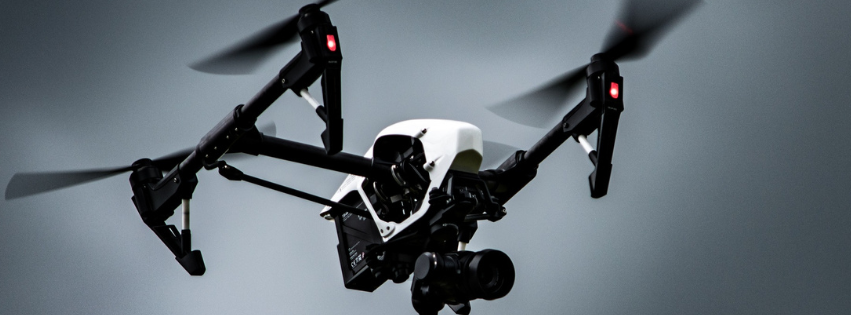
The world unfolds beneath you like an unfurling map. Forests become textured carpets, rivers trace silver lines through the landscape, and cities pulse with a miniature energy. This is the captivating perspective of aerial photography, a realm once reserved for helicopters and airplanes, now democratized by the rise of affordable and accessible drone technology. Whether you’re a seasoned photographer seeking new perspectives or a curious beginner eager to take flight, this guide will navigate you through the world of drone cameras, helping you choose the perfect eye in the sky to capture breathtaking aerial shots.
Essential Drone Camera Features
Before we dive into specific recommendations, let’s explore the key factors that differentiate drone cameras and influence their capabilities.
- Sensor Size and Image Quality: The sensor is the heart of any camera, and in drones, it plays a crucial role in determining image quality. Larger sensors generally capture more light and detail, resulting in better low-light performance, wider dynamic range (the ability to capture detail in both highlights and shadows), and overall superior image quality. Common sensor sizes in drone cameras range from smaller 1/2.3-inch sensors found in entry-level models to larger 1-inch sensors and even Micro Four Thirds sensors in professional-grade drones.
- Resolution and Megapixels: Resolution refers to the number of pixels a camera can capture, measured in megapixels (MP). Higher resolution means more detail in your images, allowing for larger prints and more flexibility in post-processing. However, it’s important to distinguish between photo resolution and video resolution. A drone might capture 20MP photos but record video at 4K resolution, which is equivalent to roughly 8MP.
- Lens and Field of View: The lens on a drone camera determines its field of view, which is how much of the scene the camera can capture. Wider-angle lenses capture a broader perspective, ideal for sweeping landscapes and cityscapes, while narrower (telephoto) lenses provide a zoomed-in view, useful for isolating subjects or capturing details from a distance. Most drone cameras have fixed lenses, but some higher-end models offer zoom capabilities.
- Video Capabilities: If you’re interested in aerial videography, consider the drone’s video resolution (e.g., 4K, 5.2K), frame rates (e.g., 24fps for cinematic look, 30fps for standard video, 60fps for smoother action), and video codecs (e.g., H.264, H.265 for efficient compression). Higher resolution and frame rates generally result in better video quality, but also require more storage space.
- Intelligent Flight Modes: Modern drones offer intelligent flight modes that make capturing cinematic shots easier than ever. Features like Orbit (circling a subject), ActiveTrack (automatically following a subject), Point of Interest (orbiting a specific point), and Waypoints (pre-planning flight paths) can add dynamism and creativity to your aerial footage.
Best Drone Cameras for Every Budget
Now that you understand the key considerations, let’s explore some of the best drone cameras available, categorized by budget:
- Entry-Level:
- DJI Mini 3 Pro: This compact and lightweight drone is a fantastic entry point into aerial photography. It boasts an impressive 1/1.3-inch sensor, capable of capturing 48MP photos and 4K/60fps video. Its user-friendly features, including obstacle avoidance and intelligent flight modes, make it easy to fly and capture stunning aerial shots.
- Autel EVO Nano+: A strong competitor to the DJI Mini 3 Pro, the Autel EVO Nano+ offers a similar compact design and a slightly larger 1/1.28-inch sensor, capable of capturing 50MP photos. It also features a 4K/30fps video recording and an obstacle avoidance system for safer flights.
- Mid-Range:
- DJI Air 2S: Stepping up in features and performance, the DJI Air 2S offers a 1-inch sensor, capable of capturing 20MP photos and 5.4K/30fps video. It features advanced obstacle avoidance, a longer flight time, and intelligent flight modes like MasterShots, which automatically creates cinematic aerial videos with minimal effort.
- Professional:
- DJI Mavic 3 Classic: For serious aerial photographers and filmmakers, the DJI Mavic 3 Classic is a top choice. It features a professional-grade 4/3 CMOS Hasselblad sensor, capable of capturing 20MP photos and 5.1K/50fps video. Its dual-camera system includes a telephoto lens, providing greater flexibility for capturing distant subjects.
Essential Accessories for Aerial Photography
To enhance your aerial photography experience and capture even more stunning shots, consider these essential accessories:
- ND Filters: ND filters (Neutral Density filters) are essential for controlling the amount of light entering the camera lens. This allows you to use slower shutter speeds, even in bright daylight, to create cinematic motion blur effects in your aerial videos or achieve a specific aesthetic in your photos. A set like the Freewell All Day – 8Pack ND Filter Set for DJI Mini 3 Pro provides a range of ND filter strengths for different lighting conditions.
- Carrying Case: Protect your valuable drone investment during transport and storage with a durable carrying case. A hard-shell case like the Case Club Waterproof DJI Mini 3 Pro offers excellent protection against impacts and the elements.
- Extra Batteries: Extend your flight time and capture more footage with extra batteries. For the DJI Mini 3 Pro, consider the Genuine DJI Mini 3 Pro Intelligent Flight Battery.
Aerial photography offers a unique and captivating perspective, allowing you to capture the world from breathtaking new angles. With the increasing accessibility of drone technology, capturing stunning aerial photos and videos is easier than ever before. By understanding the key factors to consider when choosing a drone camera, you can find the perfect tool to unleash your creativity and take your photography to new heights. Whether you’re a beginner or a professional, there’s a drone camera out there waiting to transform your vision into reality. So, embrace the sky’s the limit mindset, explore the world from above, and capture images that will inspire awe and wonder.
Liked this post? Check out some of our others:
Freezing the Thrill: A Guide to Sports Photography
